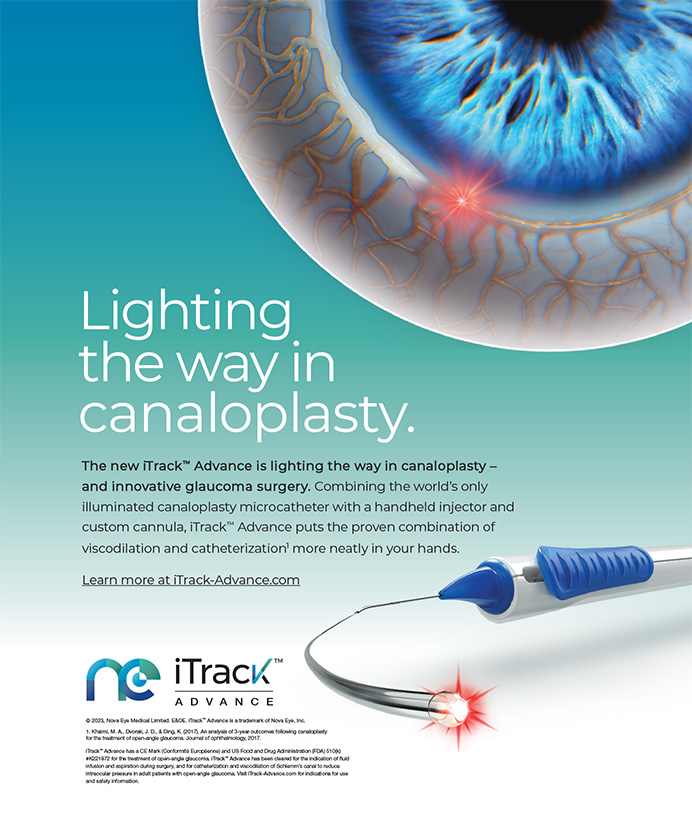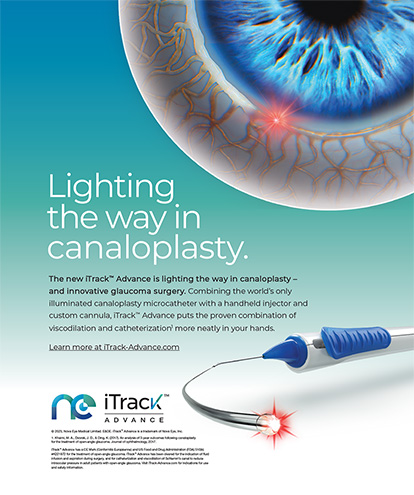
Most ophthalmologists have worried about malpractice liability at one time or another. Perhaps, for you, it occurred when you first looked at malpractice insurance coverage. Maybe you initially became concerned when you were served with a lawsuit by a former patient or employee or when you learned that a colleague had been sued. Nearly all ophthalmologists would be wise to acknowledge the potential liability they face and take the proper steps to protect themselves against it.
Risk Management
The first and most obvious strategy to protect yourself against malpractice liability is to reduce your risk and practice the best medicine possible. This begins with a dedication to being the best physician you can be, developing your ongoing knowledge through education, and maintaining a general approach to meeting the medical standard of care expected in the field of ophthalmology.
AT A GLANCE
- To protect yourself against malpractice liability, practice the best medicine possible. Develop your ongoing knowledge, maintain the medical standard of care, and incorporate risk management techniques.
- Personal asset protection encompasses shielding a physician’s home, retirement accounts, other investment accounts, second home or rental real estate, and valuable personal property.
- Practice protection includes cash flow, income, real estate, and equipment. The tools that protect cash flow also typically help doctors save on income taxes and build retirement wealth.
Beyond this medicine-centered approach, you would be well served to incorporate nonspecialty-specific risk management techniques into your practice. These include learning how both physicians and staff members can best communicate with patients, especially when dealing with difficult patients or bad outcomes; implementing methods for handling protected health information; adhering to the Health Insurance Portability and Accountability Act’s constantly changing regulations; and managing the risks of communication technology, from blogs and websites to text messages and email.
Asset Protection
Regardless of how many risk management courses you take or how carefully you practice, mistakes will occur. Human error cannot be eliminated from the equation. Moreover, sometimes, poor outcomes occur even when all of the best practices are followed, and occasionally, bad outcomes lead to potential liability, even if you believe you did nothing wrong. Certainly, the US legal system is not perfect, and predicting liability is not an exact science.
For these reasons, many ophthalmologists and other physicians have chosen to buttress their practice’s risk management with asset-protection planning. The goal is simple: to position a client’s assets in such a way as to make it difficult and, in certain cases, nearly impossible for a potential future lawsuit plaintiff to have access to them. If your goal is to feel more secure and sleep better at night knowing that you will not lose what you have worked hard to build, then asset-protection planning is an important part of the solution.
A fundamental concept to understand about asset-protection planning is that it is a discipline of degrees, not a black-and-white analysis. My colleagues and I use an asset-protection rating system for a client’s overall situation that goes from -5 (totally vulnerable) to +5 (superior protection). The goal is to move as much of a client’s wealth as possible from the negative vulnerable positions to the higher positive protected positions, with as little cost and interruption as possible.
Practice Asset Protection
Although the first priority of most physicians is to protect their personal assets, practice protection should not be overlooked. That is because any malpractice claim or employee claim (eg, sexual harassment, wrongful termination) against any of the doctors threatens all of the assets of the practice. In other words, if you are in a group practice, you are underwriting all of the acts and omissions of your partners to the extent of your practice assets.
Your cash flow and income are your most important practice assets. The good news is that the tools that protect your cash flow also typically help you to save on income taxes and to build retirement wealth. These tools include qualified retirement plans such as defined benefit plans, 401(k) and combination plans, nonqualified plans, and captive insurance arrangements.
Other important practice assets include the practice’s real estate, if any, and valuable equipment. If your practice has valuable real estate or equipment, you may want to separate these assets from the main practice by using limited liability companies (LLCs) to lease them back to the main practice entity.
Personal Asset Protection
Personal asset protection encompasses shielding your home, retirement accounts, other investment accounts, second home or rental real estate, and valuable personal property.
My colleagues and I typically recommend leveraging your state’s exempt assets as a priority, because (1) they enjoy the highest +5 level of protection and (2) they involve no legal fees, state fees, accounting fees, or gifting programs. In other words, you can own the exempt asset outright in your name, have access to any values, and still have it 100% protected from lawsuits against you.
Each state law has assets that are absolutely exempt from creditor claims, thereby achieving a +5 status. Many states provide exemptions for qualified retirement plans and individual retirement accounts, cash within life insurance policies, annuities, and primary homes. Seek an expert in this area to find out the exemptions in your state.
Beyond exempt assets, basic asset protection tools like family limited partnerships (FLPs), LLCs, and certain types of trusts should be used. FLPs and LLCs provide strong asset protection against future lawsuits, allow maintenance of control by you (the client), and can provide income and estate tax benefits in certain situations. While not nearly as strong as exempt +5 tools, FLP and LLC protections typically allow a physician to create a high enough hurdle against creditors to encourage them to negotiate favorable settlements. For these reasons, we often call FLPs and LLCs the “building blocks” of a basic asset protection plan.
Many types of trusts also provide significant protection for physicians. These can include life insurance trusts, charitable remainder trusts, grantor-retained annuity trusts, domestic asset protection trusts, and more.
Obviously, the asset-protection benefits of all these legal tools are reliant upon proper drafting of the documentation, proper maintenance and respect for formalities, and proper ownership arrangements. If all these are in place, you can enjoy solid asset protection for a relatively low cost.
Conclusion
The practice of ophthalmology has inherent lawsuit risks, primarily from medical malpractice. Risk management and asset protection planning go hand in hand to help you reduce your risk of liability and protect you in case liability does occur.
SPECIAL OFFER
For a more in-depth look at asset protection, read For Doctors Only: a Guide to Working Less and Building More and the continuing medical education monograph, Risk Management for the Practicing Physician. To receive a free print copy, call (877) 656-4362. For a free ebook download, visit www.ojmbookstore.com, and enter promotional code CRST02.




